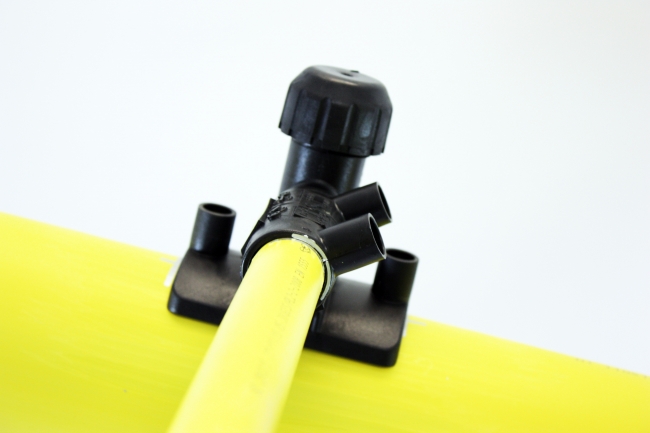2 minute read • published in partnership with CREAT3D
Case study: How Radius Systems used additive manufacturing to support innovation project
Established in 1969, Radius has developed and manufactured innovative plastic pipeline solutions for the gas industry and these solutions are now commonly used in the water, wastewater, energy & power, district heating and telecoms sectors.
The Tapping Tee is used to create a branch of a smaller diameter pipe, off a larger diameter pipe. Within the Tapping Tee is a cutter, to cut a hole into the pipe wall. The cutter protrudes a few millimetres into the opening and causes turbulence to the flow of air. In order to re-engineer the inner profile of the fitting to achieve optimal airflow, Radius would normally engage the services of a third-party company who specialise in CFD analysis to run simulations. This CFD analysis is expensive and time consuming, creating results which can be difficult to interpret. Once a design change is then made, the entire process must be followed again. Prior to using AM, physical prototyping was not possible as it would have involved creating or modifying a mould and injection moulding a small number of test components.

Radius reduced lead times by 97%, from 2-4 weeks down to 24 hours by bringing additive manufacturing equipment in-house / Picture: CREAT3D
Since bringing Additive Manufacturing equipment in-house, Radius has radically improved and shortened its design feedback loop. Their Formlabs 3D Printer has enabled Radius to print different iterations of the same component and test them on their in-house flow rig. This allows for immediate design changes and re-testing, at a faster turnaround (hours compared to weeks) and with the ability to run multiple live data test scenarios in-house, rather than theoretical simulations. AM not only realises costs and time savings, but also enables stronger R&D, internal learnings and better components for enhanced performance.
Return on investment
Traditional fabrication – outsourced to 3rd party for CFD analysis & simulations
3D printing – cost of £40 per part (297ml of resin used)
Cost saving – 93% cost saving
Time saving – lead time reduction from 2-4 weeks to 24 hours, a 97% reduction
Emily Whitley, Development Engineer at Radius, said: “CREAT3D has been great to work with, simple and straightforward offering the range of printers and resins we need. The use of 3D printing in the business has increased greatly since the initial development of new fittings and re-engineering of old, the expansion of the range of resins available has allowed us to use printed components in robotic prototypes and even in sub-component installation parts where the investment in mould-tools was not justified by the quantities forecast”
